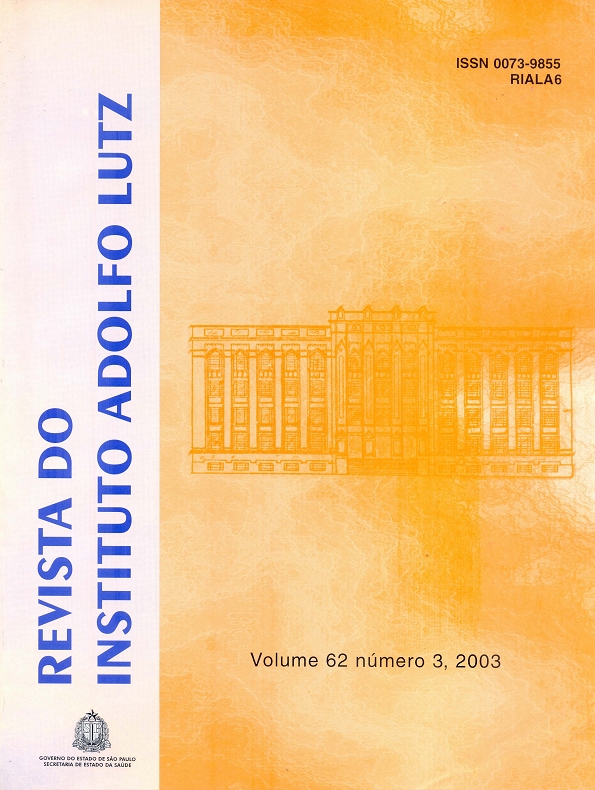Abstract
Although tests using animals are still demanded in the evaluation of shampoos, there is a strong evidence of a tendency for replacing them by in vitro systems. This study aims at defining
conditions for the application of a method using NCTC clone 929 cells, as an alternative. Procedures
employed to test non diluted samples of shampoos for adults resulted in irritation (in the in vivo method); the same result was not observed when samples diluted to a 25% concentration were tested. In the in vitro tests, the same shampoos presented a perfect correlation of results when not diluted (cytotoxic) and when
diluted to a 0.1% concentration (non cytotoxic). When the shampoos for children use were tested, the only case of irritation happened with one of the 4 non-diluted shampoos The absence of cytotoxicity was observed in the in vitro test, after diluting all the samples to 1% and 0.1%. It is possible thus to use the in vitro test instead of the vivo one, if preceded by a careful validation with emphasis on the concentration
of the product.
References
1. Bagley, D.M. et al. An evaluation of five alternatives in vitro to the rabbit eye irritation test in vivo. Toxicol. in Vitro, 6: 275-284, 1992.
2. Buehler, E.V.; Newmann, E. A., A comparison of eye irritation in monkeys and rabbits. Toxicol. Appl. Pharmacol., 6: 701-710 1964.
3. Code of Federal Regulation Title 16, part 1500.42 US Government Printing Office, Washington D.C., 1986.
4. Draize, J. H.; Woodward, G.; Calvery, H. O. Methods for the study of irritation and toxicity substances applied topically to the skin and mucous membranes. J. Pharmacol. Exp.Ther., 82: 377-390, 1944.
5. Earl, L.K.; Dickens, A.D.; Rowson, M.J. A critical analysis of the rabbit eye irritation test variability and its impact on Azevedo, J. C. de; Cruz, A. S. e Pinto, T. de J. A - A proposal of an alternative in vitro method for the evaluation of the safety of shampoos. Rev. Inst. Adolfo Lutz, 62(3): 189 - 193, 2003. the validation of alternative methods. Toxicol. in Vitro, 11: 295-304, 1997.
6. Green, S. et al. Criteria for in vitro alternatives for the eye irritation test. Fd. Chem. Toxicol., 31: 81-85, 1993.
7. Gupta, K.C. et al. An eye irritation test protocol and an evaluation and classification system. Fd. Chem. Toxicol., 2: 117-121, 1993.
8. Kaweit, S. et al. A national validation project of alternative methods to the Draize rabbit eye test. Toxicol. in Vitro, 4: 702-706, 1990.
9. Lovell, D.P. Principal component analysis of Draize eye irritation tissue scores from 72 samples of 55 chemicals in the ECETOC data bank. Toxicol. in Vitro, 10: 609-618, 1996.
10. United .States Pharmacopeia. 26. ed. Rockville: United States Pharmacopeial Convention, 2003. p. 2026-2028.

This work is licensed under a Creative Commons Attribution 4.0 International License.
Copyright (c) 2003 Revista do Instituto Adolfo Lutz
